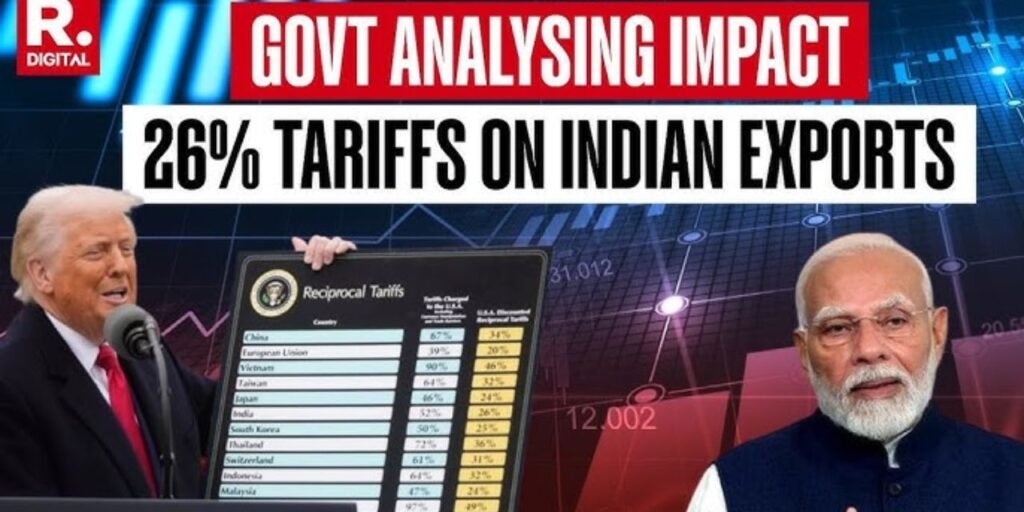
April 4, 2025 – A recent analysis by CareEdge Ratings highlights the implications of the United States’ decision to impose a uniform 26% reciprocal tariff on merchandise imports from India. This measure marks a significant shift from the earlier average US tariff of approximately 3.5% on Indian exports.
India’s merchandise exports to the US totaled $77.5 billion in FY24, against imports worth $42.2 billion. The major sectors exporting to the US include Electronics, Textiles, Pharmaceuticals, Gems & Jewellery, Agricultural Products, Chemicals, and Automobiles & Parts.
Key Highlights from the Report:
- Tariff Comparison: While India now faces a 26% tariff, its major export competitors such as Vietnam (46%), Bangladesh (37%), China (34%), Taiwan and Indonesia (32% each), and Pakistan (29%) face higher reciprocal tariffs, which could benefit India’s relative competitiveness.
- Sectoral Outlook:
- Electronics: Neutral impact expected. Though production could shift elsewhere, higher tariffs on China balance the field for India.
- Textiles: Largely neutral. India’s cotton-based products and strong domestic supply chain reduce vulnerability.
- Pharmaceuticals: Exempted from tariffs for now. The sector remains well-positioned due to high US FDA compliance.
- Gems & Jewellery: Likely to be negatively affected. Tariffs raised from 3.17% to 26% may reduce demand.
- Agricultural Products: Minor impact expected, though shrimp exporters may face pressure due to Ecuador’s lower 10% tariff.
- Chemicals: Minimal direct impact. However, risk of Chinese dumping in India and other markets remains.
- Automobiles & Parts: Low export volumes to the US mean limited effect, with potential resilience due to US OEM dependencies.
“The overall sectoral impact of the US reciprocal tariff ranges from neutral to negative, with Gems and Jewellery emerging as the most adversely affected,” CareEdge Ratings noted in its assessment.
Additional Considerations:
The report also cautions about the possibility of increased dumping from competing countries into India and global markets, which could create pricing pressures across several sectors.
